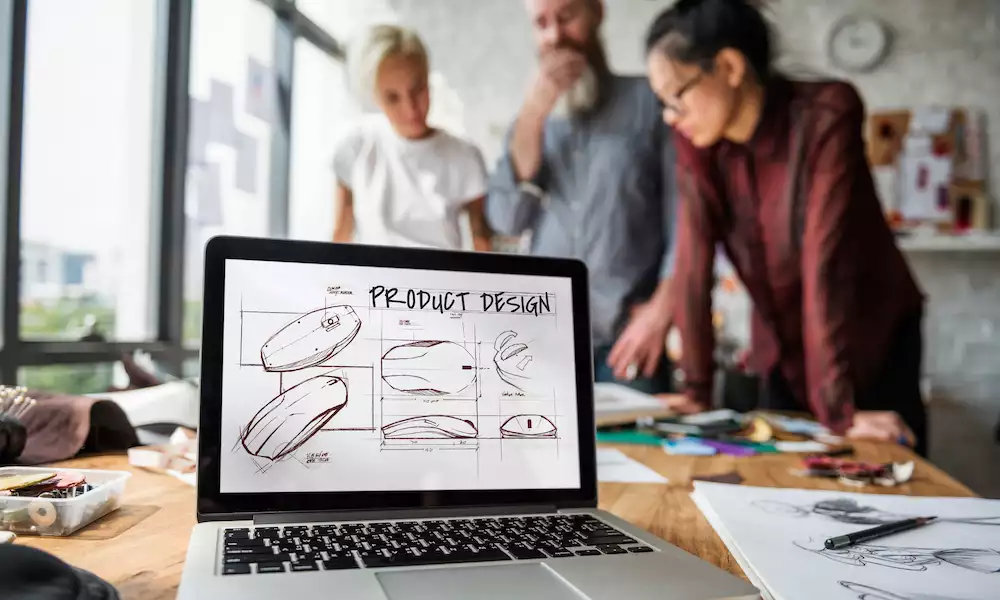General
How To Streamline The Product Design Process

In today’s competitive marketplace, the ability to create and deliver exceptional products and services is crucial for corporate success. This is easily achievable with an efficient product design process. However, it can be time-consuming and resource-intensive, leading to delays and inefficiencies.
Streamlining your product design processes and workflows to improve efficiency and reduce costs is essential.
By assessing existing processes and workflows, deep-diving into your current business functions, and identifying opportunities for improvement, you can create a proven process-driven approach that delivers results. This comprehensive guide will unveil the crucial steps to optimizing your workflow, maximizing efficiency, and achieving unparalleled success in product design.
Ways You Can Streamline The Product Design Process
Streamlining the product design process can help your team save time, reduce costs, and improve overall efficiency and include the following:
- Setting the right objectives
- Using a prototyping tool and time-tracking tool
- Prioritizing collaboration and communication
- Research and information gathering
- Testing and feedback
Set Clear Objectives
Setting clear objectives involves outlining the purpose, scope, and desired results of a product design project in a well-defined manner. This ensures that everyone involved in the project understands the goals, expectations, and success criteria.
The team can focus on what matters most and avoid confusion or misaligned priorities by establishing specific, measurable, achievable, relevant, and time-bound (SMART) objectives.
Clear objectives also provide a foundation for decision-making throughout the design process. When faced with multiple design options, the team can evaluate each choice against the established objectives to determine which best aligns with the project’s goals.
Another benefit to setting the right goals is allowing the team to monitor progress and measure success more effectively, ensuring that any deviations from the desired path are identified and addressed promptly.
Use A Prototyping Tool
Using prototyping tools is an essential strategy for streamlining the product design process. These tools help designers create mockups or interactive simulations of the product before it is fully developed, allowing them to test and refine the design before investing significant time and resources into development.
3D precise mesh

Prototyping tools also come in various forms, such as wireframing, mockup, and interactive prototyping applications, each serving a different purpose in the design process.
A 3D precise mesh from Spatial is an example of a high-fidelity digital representation of a physical object or environment, which can be used for various purposes, such as virtual reality, simulation, or product testing. This type of mesh provides detailed, accurate geometries, allowing designers to analyze the product’s form, function, and performance in a virtual setting before moving on to physical production.
Use A Time Tracking Tool
Using a time-tracking tool in the product design process involves monitoring and recording the time team members spend on various tasks, providing valuable insights into resource allocation and project progress. This tool can help identify inefficiencies, pinpoint areas for improvement, and ensure that the team stays on schedule.
As a digital technology, a time tracking tool can help you identify which tasks take too much time and which can be automated or delegated.
Moreover, time-tracking tools can enhance team communication by providing visibility into individual work progress and promoting accountability.
In addition, the tool can reveal instances where team members may be overwhelmed or underutilized, allowing for a more equitable distribution of tasks and improved team morale.
Prioritize Collaboration And Communication
Prioritizing collaboration and communication entails creating an environment where team members feel comfortable sharing their ideas, concerns, and feedback. This can be achieved by fostering a culture of transparency, trust, and mutual respect.
Encourage open discussions, brainstorming sessions, and regular check-ins to ensure everyone is on the same page and working towards the same goals.
Plus, you can utilize modern tools and platforms to facilitate seamless collaboration and communication among team members, such as project management software, instant messaging applications, and video conferencing solutions. These tools can help bridge geographical barriers, streamline workflows, and ensure real-time information is shared.
Communication tools can also increase the involvement of stakeholders, such as clients and end-users, throughout the design process. This enables valuable input to be considered early on and helps prevent costly changes later in the project. In addition, ensure a clear communication channel for stakeholders to provide feedback and stay updated on project progress.
Research And Gather Information
Conducting thorough research and gathering pertinent information is crucial in streamlining the product design process. It involves examining market trends, user preferences, technological advancements, and competitor offerings to create a comprehensive understanding of the product landscape.
Practical research methods include user surveys, interviews, focus groups, and studying industry reports. Additionally, designers can perform usability tests on existing products to analyze their strengths and weaknesses.
By applying the gathered information, designers can identify gaps in the market and discover unmet needs. They can also make informed decisions about the product’s features, functionality, and aesthetics, ultimately leading to a more prosperous and user-friendly development.
Testing And Feedback
Testing and feedback are fundamental to the success of a product. This process typically involves multiple stages, including usability testing, user acceptance testing, and beta testing.
During usability testing, participants interact with prototypes or early versions of the product to evaluate its ease of use and identify any pain points. Designers then make necessary adjustments based on the insights gathered.
User acceptance testing ensures that the product meets the requirements and expectations of the target audience. In contrast, beta testing involves releasing a near-final version of the product to a select group of users for real-world evaluation.
Throughout these stages, collecting feedback from stakeholders, such as clients, end-users, and team members, allows the design team to iteratively refine the product, address issues, and optimize its performance.
The Importance Of Streamlining The Product Design Process
Streamlining the product design process can significantly impact a company’s competitiveness, innovation, and overall success. The key benefits of streamlining product design include the following:
Reduced Time-To-Market
By eliminating unnecessary steps, optimizing workflows, and improving communication, streamlining can help bring products to market more quickly, giving companies a competitive edge.
Cost Savings
Streamlining minimizes delays, rework, and resource wastage, reducing development costs. Efficient project management also helps with better allocation of resources and budget control.
Enhanced Collaboration
A streamlined process promotes cross-functional collaboration and communication, ensuring all team members are on the same page and working towards a common goal.
Improved Product Quality
By incorporating iterative design, testing, and feedback, the streamlined design process enables teams to identify and resolve issues early on, leading to higher-quality products that better meet user needs.
Increased Customer Satisfaction
Products developed through a streamlined process are more likely to meet customer expectations, leading to increased satisfaction and brand loyalty.
Agility And Adaptability
A streamlined process allows teams to pivot and adapt more quickly to changes in market conditions, customer feedback, or emerging trends, ensuring that the product remains relevant and competitive.
As businesses face evolving challenges and ever-changing consumer demands, optimizing their design processes will ultimately pave the way for growth, long-term sustainability, and a strong market presence.
Conclusion
Streamlining the product design process is crucial for businesses to stay ahead of their competition in today’s market. Following the steps outlined in this guide, companies can improve efficiency, reduce costs, and deliver exceptional products to their customers.
It’s important to remember that streamlining is an ongoing process, and companies should regularly monitor and evaluate their operations to identify areas for improvement.






